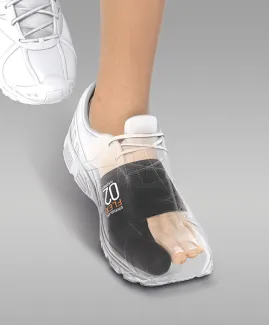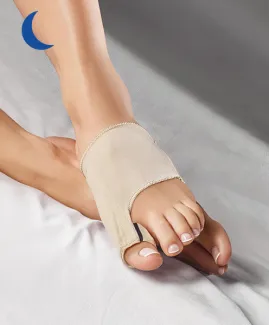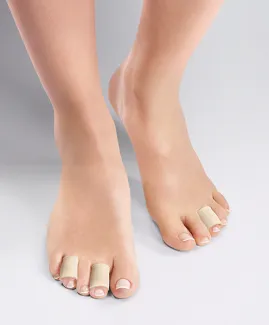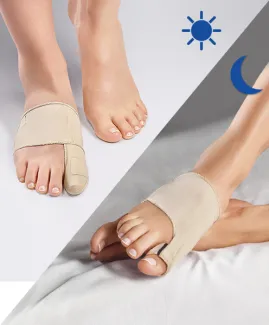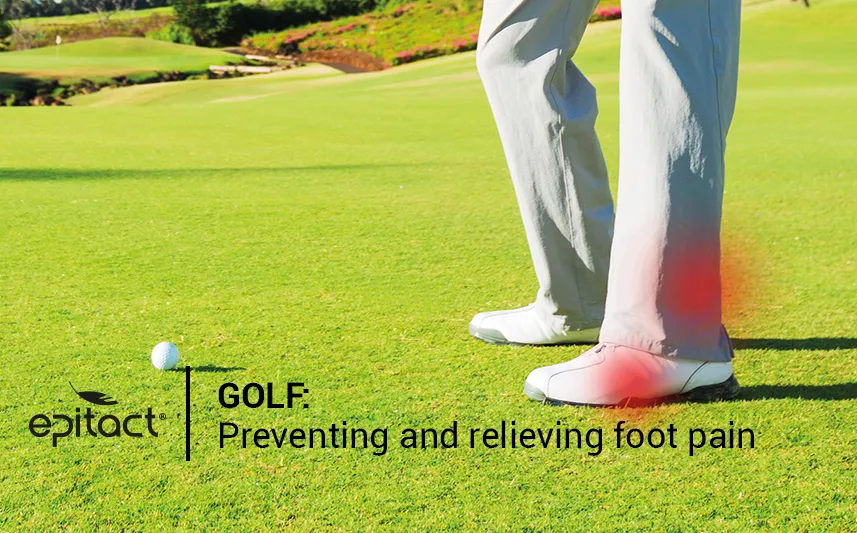
Among the most complete sports involving several joints, let’s cite golf. Indeed, this sport requires the use of the back, hips, wrists, knees, feet and ankles. Between repetition of movements during practice, swings and steps on the green, the body moves continuously.
However, the frequency of injuries is higher for some parts of the body. Players often complain about golf foot pain during practice and ankle pain after golf. Focus on these common golf foot and ankle injuries with EPITACT®.
What are the common golf foot and ankle injuries
In addition to foot pain in golf and ankle injuries, other parts of the body can be affected. These areas may change according to the level of the player.
Golf injuries
An international consensus statement showed that amateur golfers suffer from 1 injury per 1000 hours(1)!
The cause of golf injuries is different depending on if it’s a professional or amateur player. For professional golfers, injuries are much more caused by overuse of joints whereas in amateurs, they are rather linked with a poorly executed swing(2).
Musculoskeletal disorders in golf
There are different risk factors of musculoskeletal disorders (MSD) in golf. Regular practice of physical activities such as golf is one of them. The stress put on the body that occurs from overuse and repeated movements is far from being benign. Arthritis, carpal tunnel syndrome or low back pain are some examples of the frequent consequences on the golf course.
Common golf foot pain
Common foot pains in golf are caused by pressures, poor positions and postures as well as biomechanical problems. By the way, the foot is especially vulnerable: ball of the foot pain after golf, heel pain, corns, calluses…
In addition to bad postures, the type of shoes also plays a role in the onset of golf foot pain as well as ankle pain in golf. Indeed, inappropriate shoes help the formation of a bunion (hallux valgus). This deformity, caused by excessive pressure on the toes, is mainly due to some kind of shoes.
Even more common, heel spurs are another cause of foot pain after golf. Very frequent in golfers, this intense pain in the heel and under the fascia is caused by plantar fasciitis.
Don’t worry, solutions exist to protect all these painful areas and to improve comfort during the practice or competitions!
Preventive solutions for foot and ankle pain in golf
Warm-up, stretching and muscle strengthening exercises
Before sessions, any self-respecting golfer will begin with warm-up exercises to avoid pain once on the green. By doing these short exercises, the whole body and especially muscles and ligaments get prepared for efforts. By doing it, you limit the risks of being injured.
As a complement, stretching exercises to do regularly and especially after your session will help you keep a certain mobility. Then, muscle strengthening exercises will provide more support to your joints and reduce the risk of golf foot pain and ankle injuries in golf.
The solutions to prevent and treat foot injuries
To prevent and relieve foot pain in golf and especially ball of foot pain after golf, first choose shoes adapted to your foot shape: not too narrow, not too wide. Pay attention to the seams that could create additional and painful pressure on the foot. Also, opt for shoes with a qualitative sole that absorbs and distributes pressure properly when the heel hits the ground.
There are also solutions to protect and relieve your toes from corns in the shoes. The EPITACT® toe protections DIGITUBES®* and Digitops* are washable and reusable and protect from hard corns on toes and soft corns between toes, respectively.
If you have a bunion (aka hallux valgus) that causes you foot pain during golf, EPITACT® has the solution. The bunion corrector for sport* helps to realign the big toe during physical activity. It fits into any type of shoes as it is very thin and flexible.
Moreover, relieve your heel pain related to heel spur or plantar fasciitis thanks to the EPITACT® heel lifts*. They slightly raise your heel to reduce the strain on the plantar fascia on the bottom of your foot.
Lastly, EPITACT® has found a solution to relieve the players who suffer ball of foot pain after golf. The metatarsal pads* are made of a thin layer of patented silicone gel that distributes pressure under the forefoot when it enters in contact with the ground.
Preventive solutions for golf ankle injury and ankle pain after golf
Performing a golf swing requires some torsions and rotations of the body that may cause physiological disorders. If this movement is controlled, it has no reason for having such consequences.
However, inappropriate weight transfer resulting from imprecise movements can cause twisting of the ankle outwards. Moreover, risks of fatigue-related injuries responsible for osteoarticular problems and ankle sprains are frequent in golfers. For these players, golf could be progressively resumed only after immobilisation and serious rehabilitation.
By combining adapted shoes, well-executed movements and warm-up exercises, golf entails no more risks than another sport. However, as any sport or physical activity, golf is likely to cause traumas, foot pain and ankle injuries.
To face the common golf foot injuries and ankle pain after golf or during practice, some medical devices exist. Each of them is dedicated to your daily comfort and accompanies you on the course so that you enjoy the pleasure of playing golf!
*These solutions are class I medical devices that bear the CE marking under this regulation. Carefully read the instructions before use. Manufacturer: Millet Innovation. 03/2022
For more details about this general and simplified approach, here are further sources:
(1)Murray, Andrew, Astrid Junge, Patrick Gordon Robinson, Mario Bizzini, Andre Bossert, Benjamin Clarsen, Daniel Coughlan, et al. « International Consensus Statement: Methods for Recording and Reporting of Epidemiological Data on Injuries and Illnesses in Golf ». British Journal of Sports Medicine 54, no 19 (October 2020): 1136‑41. https://doi.org/10.1136/bjsports-2020-102380.
(2)Quand le golf fait mal : problèmes musculo-squelettiques communs aux golfeurs. Wadsworth LT.Curr Sports Med Rep. 2007 décembre ; 6 (6) : 362-5. doi: 10.1007/s11932-007-0052-5
 Pharmacie
Pharmacie
